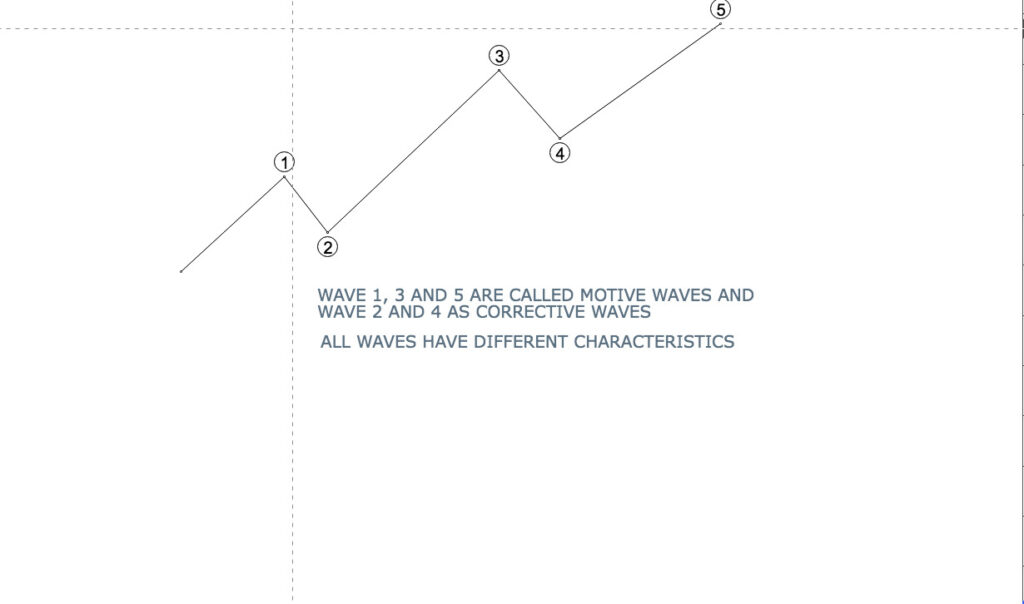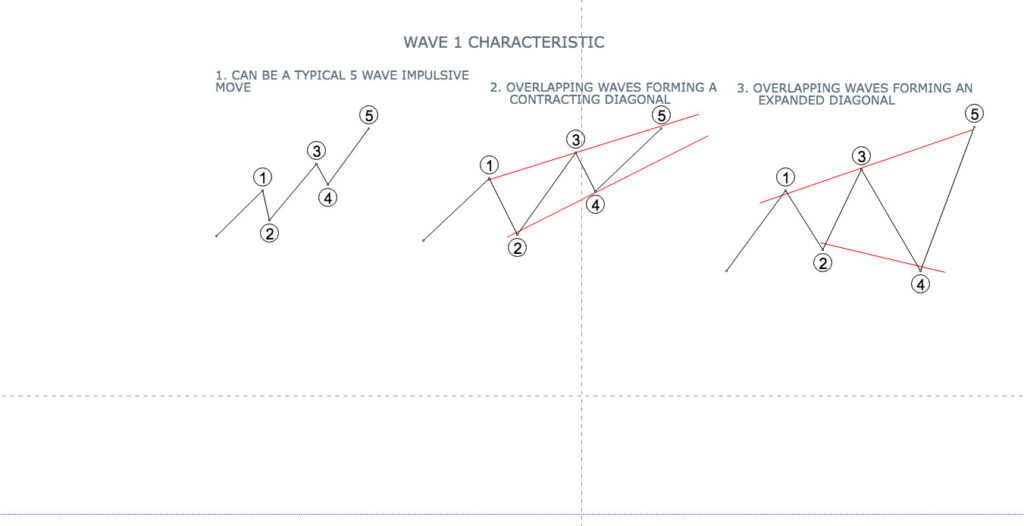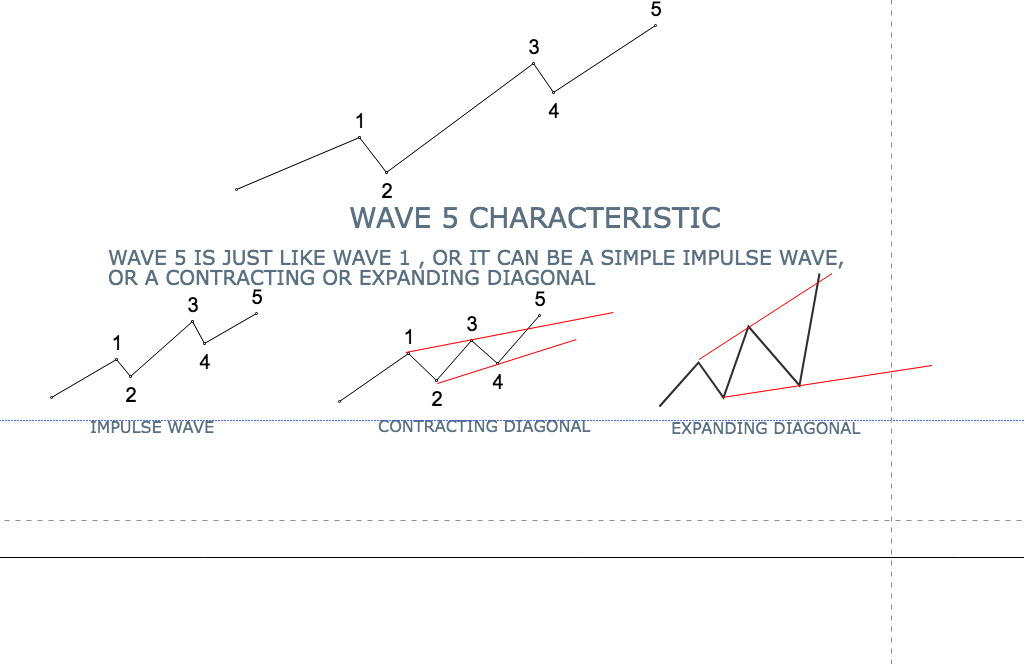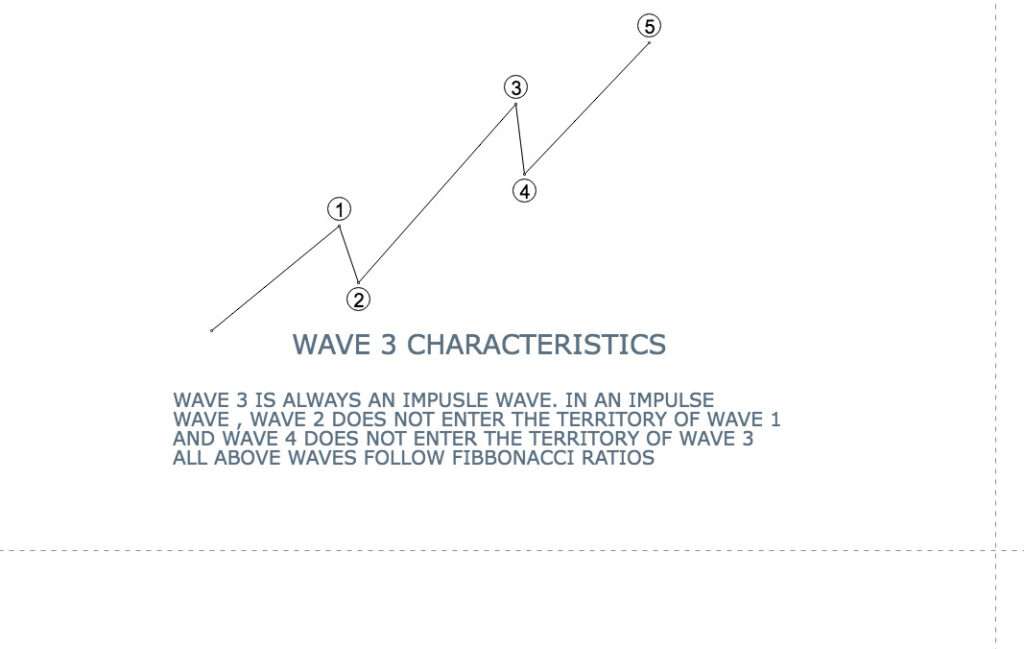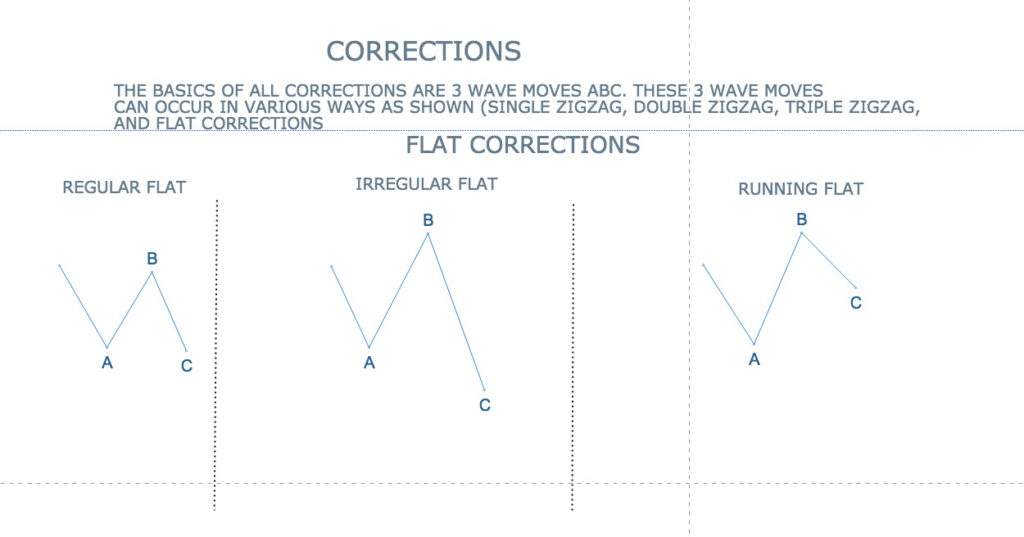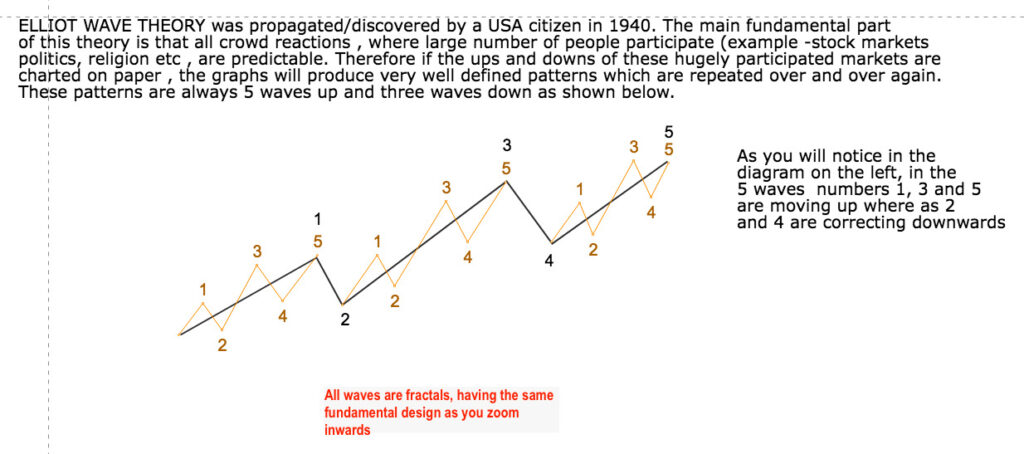Nifty – The current impulse wave seems to be extending. How much will it extend? Many probabilities in this. However one MUST consider the formation of an ending triangle which I have spoken of before. Of course , we can also see the current rise as part of wave 1 of the cycle wave V. However the pattern looks more like an ending triangle of the V cycle wave, as there is substantial increase in the amplitude of wave formation WITHIN the rectangle formed.
Whatever the case may be, one can ride on this triangle segment (the last one BEFORE the correction , or take hedging precautions, is best left to ones own choice.
Elliot Wave Theory is a technical analysis approach that attempts to identify recurring patterns (waves) in financial markets. According to the theory, these patterns are reflective of investor psychology and can be used to predict future price movements. The theory is based on the idea that markets move in cycles of optimism and pessimism, creating identifiable wave patterns.
Regarding the significance of an increase in amplitude (or magnitude) of wave formations after a near-vertical rise in prices, it’s important to note that Elliot Wave analysis involves subjective interpretation, and different analysts may have varying views on the significance of certain patterns.
In general, a near-vertical rise in prices followed by an increase in the amplitude of wave formations might be interpreted in a few ways:
- Exhaustion of Trend:
- A near-vertical rise in prices might suggest a strong, impulsive move driven by a surge in buying activity. However, if the amplitude of the subsequent waves increases, it could be interpreted as a sign that the trend is losing momentum, and the market may be entering a corrective phase. This could indicate exhaustion in the trend and a potential reversal.
This can be likened to applying sudden brakes at high speed.
- A near-vertical rise in prices might suggest a strong, impulsive move driven by a surge in buying activity. However, if the amplitude of the subsequent waves increases, it could be interpreted as a sign that the trend is losing momentum, and the market may be entering a corrective phase. This could indicate exhaustion in the trend and a potential reversal.
- Volatility Expansion:
- An increase in amplitude could be associated with increased volatility in the market. This heightened volatility might be due to a shift in market sentiment or increased uncertainty, leading to larger price swings.
Whatever the case may be, we are now very close to a correction, notwithstanding a future spurt in market prices.

